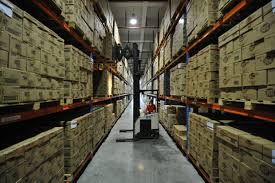
Driven by strong economic growth, e-commerce trends, rising infrastructure spending and a tightening labor market, industrial properties appear to be the way to go in 2017, according to several real estate observers.
CBRE Chief Economist for the Americas Jeffrey Havsy tells Logistic Management that the advent of e-commerce is pushing industrial availability to what he described as “unusual lows” as demand grows for facilities to be equipped to handle same-day delivery fulfillment and reverse logistics. Further, “cycles do appear longer and demand less elastic than the past,” he said. “As tenants put more expensive and complex systems in warehouses, they are less likely to move to save ’ a nickel’.
Meanwhile, the 2017 Real Confidence Executive Index by the National Council of Real Estate Investment Fiduciaries (NCREIF®), revealed that commercial real estate executives are especially bullish on industrial, asset classes in 2017. The industrial property sector received the highest allocation in both public and private equity selections with a 40% year-over-year increase in industrial from the private equity selections and a 61% increase in industrial from the REIT side when compared to the 2016 survey. For private equity, the West received the highest industrial allocation at 38%, while the East received 34%, which represents a 108% increase over 2016. “This suggests strong confidence that the industrial market will continue to outperform as demand drivers remain robust,” explained Richard Kalvoda, Executive Vice President at Altus Group. “Anticipated tax cuts and increased spending from the New Administration is expected to further strengthen the commercial real estate market in 2017,” he said.
Even physical retail stores, which until recently have been suffering as retailers struggle to compete with e-commerce, are starting to benefit from the growth of online shopping, according to an article in the Wall Street Journal. Retailers are converting empty mall space into makeshift distribution centers used for package pickup and returns of goods bought online. Online merchants are also opening physical stores to reach more customers, either via short-term leases in pop-up stores or long-term tenancies like Amazon’s upcoming move into Manhattan’s Time Warner Center. “We don’t view [online retailing] as the enemy, we view it as another distribution channel,” said Stephen Lebovitz, chief executive officer of mall owner CBL & Associates.
Amazon, Google and Facebook have rolled out numerous pop-up stores and roadshows around the country showcasing their gadgets, but Amazon has been the most active, with 31 pop-up stores in shopping centers around the U.S., and it plans to roll out grocery stores.